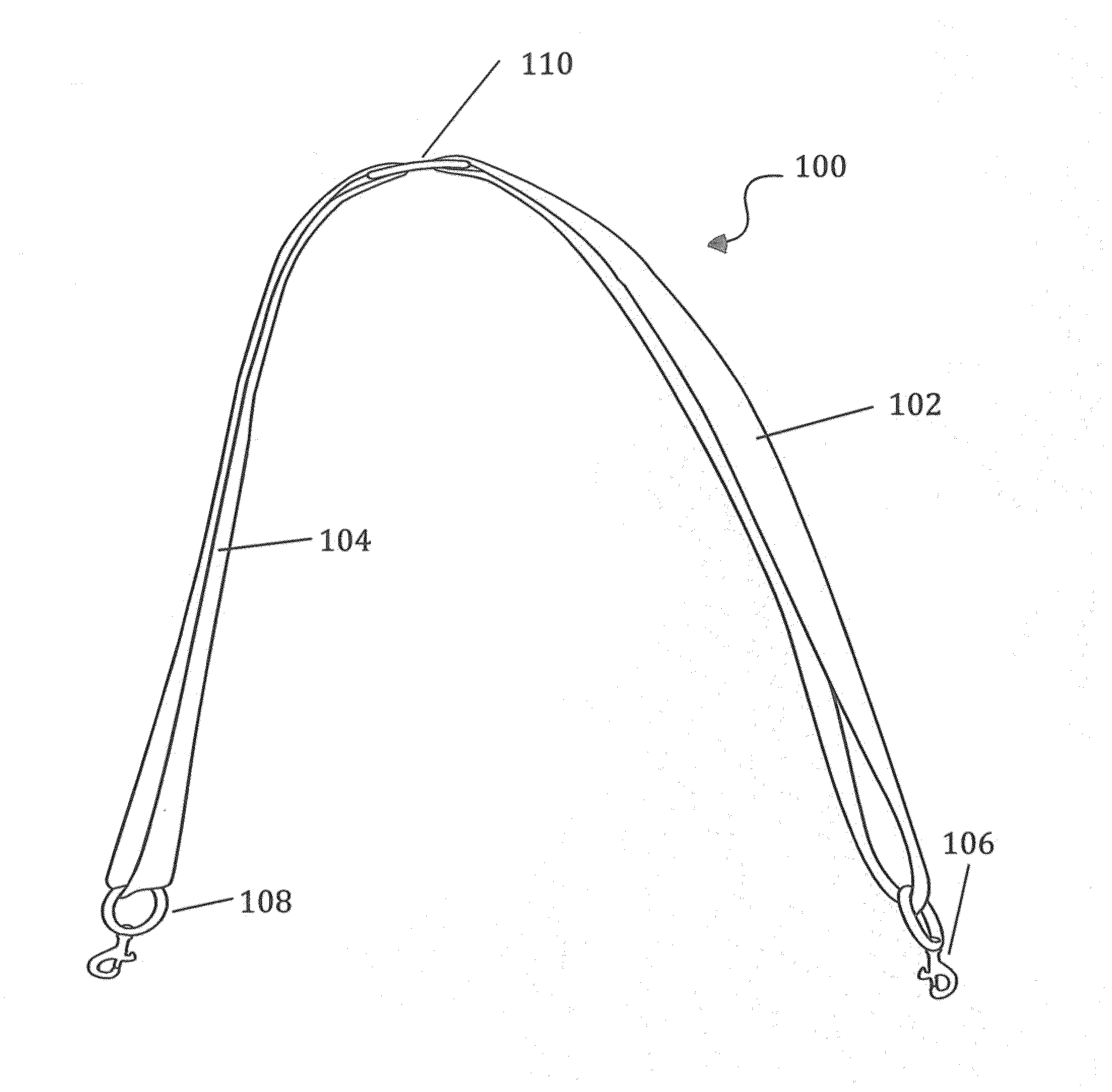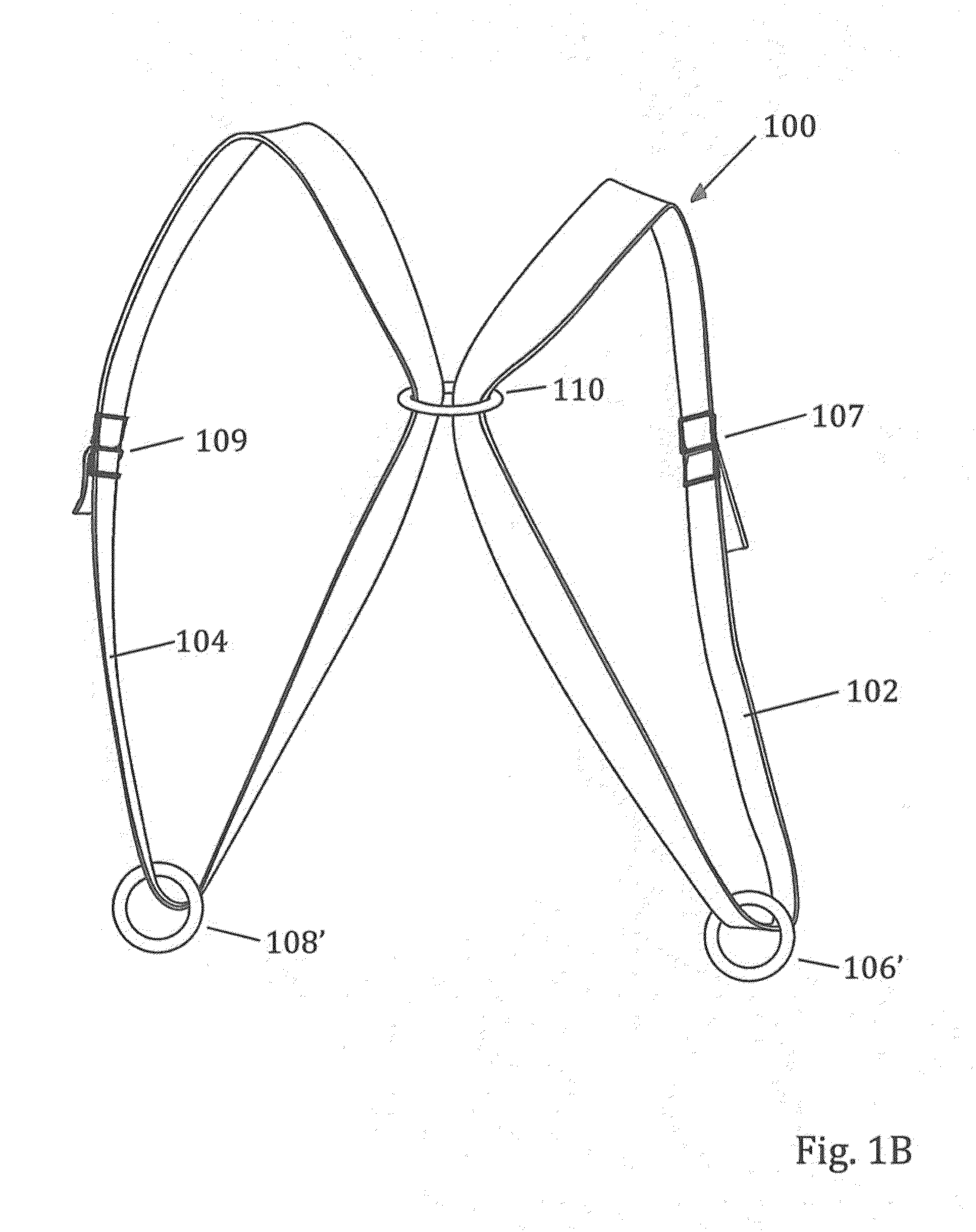Convertible, self adjusting, multimodal strap system for carrying bags and packs
- Summary
- Abstract
- Description
- Claims
- Application Information
AI Technical Summary
Benefits of technology
Problems solved by technology
Method used
Image
Examples
Embodiment Construction
[0046]In the following description, a number of embodiments of the invention are described. These embodiments collectively illustrate various aspects of the invention. It will be understood that many other embodiments and implementations of the invention are possible. Accordingly, the description below should be understood as exemplifying the invention and not by way of limitation. For example, it will be understood that various other shapes, styles, and configurations of the pack are possible and that many other shapes, dimensions, materials, and configurations of the convertible strap system are also possible.
[0047]Referring to FIG. 1A, a perspective view of a strap system 100 in accordance with the present invention is shown. The strap system 100 includes first and second straps 102 and 104. In the illustrated embodiment, each of the straps 102 or 104 is formed as a continuous loop of material such as leather, vinyl, or fabric. For example, each of the straps 102 and 104 may be f...
PUM
 Login to View More
Login to View More Abstract
Description
Claims
Application Information
 Login to View More
Login to View More - R&D
- Intellectual Property
- Life Sciences
- Materials
- Tech Scout
- Unparalleled Data Quality
- Higher Quality Content
- 60% Fewer Hallucinations
Browse by: Latest US Patents, China's latest patents, Technical Efficacy Thesaurus, Application Domain, Technology Topic, Popular Technical Reports.
© 2025 PatSnap. All rights reserved.Legal|Privacy policy|Modern Slavery Act Transparency Statement|Sitemap|About US| Contact US: help@patsnap.com



